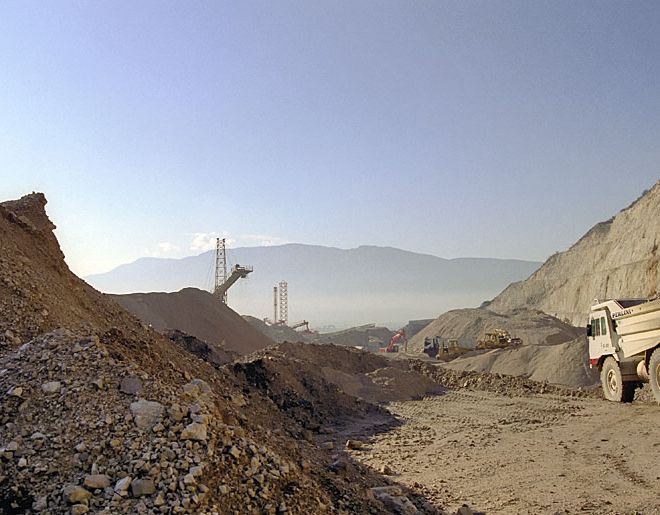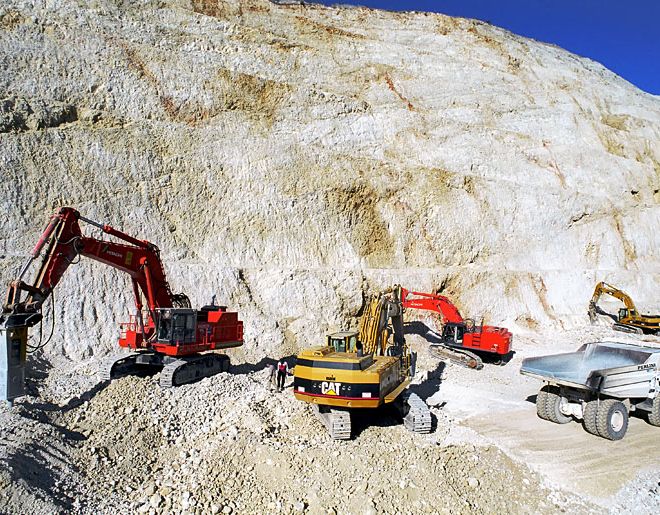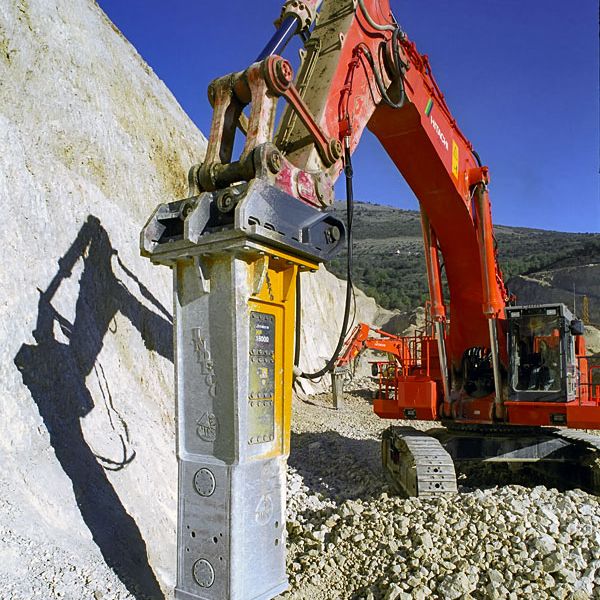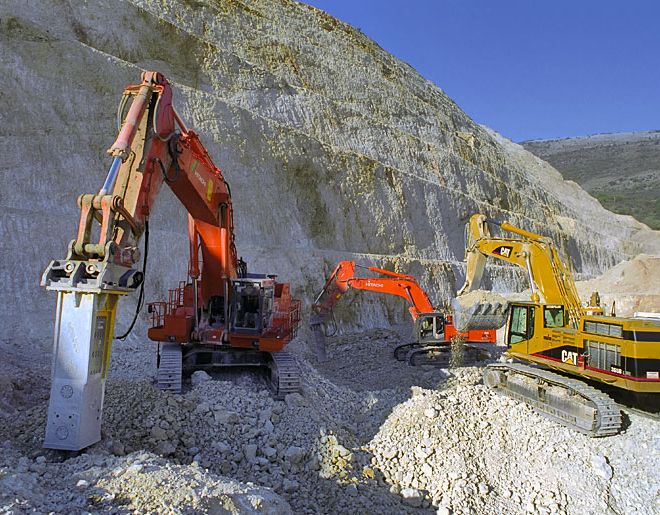An HP 18000 for primary crushing
The new HP hydraulic breaker is the biggest built to date. With several of the models already sold around the world, this giant breaker has also earned plaudits from several Italian quarry owners.
Introduced in 2008 in Europe at the last Samoter trade exhibition and in North America during the Conexpo, the HP 18000 has inevitably prompted interest of users having to deal with complex applications (e.g., hardness of the materials, volume of work) or who plan to make a significant reduction in their use of explosives.
A case in point is the Marocca Group, whose numerous activities include operation of one of the most important limestone quarries in Central Italy located in Anagni outside Frosinone.
Exceptional output for a high quality material.
For over 100 years, the Marocca Group has been active in the building, road construction and public works sectors, in addition to the production of high quality limestone aggregates. The Agnani quarry, which extends over an area of 40 hectares, is mined in compliance with the most up-to-date safety criteria and environmental compatibility. Extraction of the seams is carried out according to a system of steps which facilitates the restoration of the environmental conditions of the quarry by laying vegetable topsoil and planting local tree species.
Additionally, the quarry contains a material of high purity (99%) and a brightness factor of 88%, which makes the limestone particularly suited for use in the building industry. Precisely due to these characteristics, the Marocca Group produces various sizes utilized in 21 different applications in the construction and industrial sectors, a result possible also thanks to a fully automated crushing and screening plant built specifically for the quarry and able to process over 500 cubic meters per hour.
This substantial volume is matched with a mining capacity of the same degree, made possible thanks to the use of Indeco breakers. After using equipment made by a foreign manufacturer, the Marocca Group decided on Indeco as its supplier and has worked with them for the past five years.
As points out Alberto Marocca, president and owner of the company, the decision has reaped several benefits: Essentially, a quarry has an industrial cycle where plant and equipment are utilized for eight or ten hours a day for the better part of the year. Even more than in the construction industry, productivity and reliability are determining factors for maintaining the required volumes. Our decision to use Indeco breakers (editor’s note: a 2500, a 7500, a 12000and recently the 18000) had this criteria in mind. Our satisfaction stems as much from the robustness of the equipment and its superiority from a technological and construction standpoint, as from the excellent service provided by a local authorized shop operated by the Fratelli Alpassi. For scheduled maintenance and periodic overhaul, the Bari plant also provides servicing.”
A giant breaker for improving production and lowering costs.
The Marocca Group was one of the first to purchase the HP 18000 in Italy; the breaker is attached to a 120-metric ton Hitachi 1200 excavator fitted with a Lenhoff quick coupler. A strategic decision to increase productivity, comments Alberto Marocca: We discussed at length the purchase of the breaker and the machine, two major investments, but in the end we were convinced that the benefits over the short and long term would be significant. The excavator coupled with the HP 18000 breaker does the work of two mid-sized machines and manages to reduce the size of the hardest blocks of materials without any problem, while enabling us to clean the seam faster, which is a critical procedure for guaranteeing safety and a correct conformation for restoring environmental conditions later.
We fitted the machine with a quick coupler, so that we can switch the breakers with the bucket or ripper with the minimum time necessary, and also take advantage of its power for preliminary operations too, such as removing topsoil and other material that covers the limestone seam. Using the HP 18000 also provides another benefit from the point of view of production and logistics, because it allows us to reduce the need for explosives, resulting in substantial savings in time and production costs. The breaker boasts such power (editor’s note: 25,000 joules) that it can work in areas where even the highly efficient HP 12000 we’ve been using successfully for so long wouldn’t be able to give satisfactory results. The costs of purchasing the breaker and excavator can therefore be reabsorbed much faster than you would imagine.” Furthermore, Indecobreakers have proved to allow a more rational use of explosives and to increase production, again with major savings as the result.
The advantages of a breaker over explosives.
More and more, breakers are being seen as an outright alternative to explosives rather than just as auxiliary equipment to use afterwards. From Western Europe, the trend is shifting to North America where only a relatively low number of companies that operate quarries have fully understood the advantages of the breaker. With large-sized breakers excellent advantages can be gained in terms of production, costs and the quality of the material. The breaker can guarantee continuous production, whereas using explosives requires various stages and long downtimes (preparation of the rounds, distancing of personnel, cessation of activities, etc.).
Add to this, when mining very precious material the breaker minimizes the quantity of waste inevitably produced by explosives. The breaker can also create the profiles necessary for environmental restoration, today a critical requirement for any mining activity, while it also performs the primary crushing. The breaker substantially reduces the problems caused by explosives disturbing communities in areas surrounding the quarry.
Lastly, in the medium and long term the hourly cost of an operator and of an 80-100 metric ton excavator fitted with a large breaker (underlining the importance of machinery size in cost-to-benefit ratios) offers a substantial reduction in production costs with respect to the operating cycle performed with explosives.











